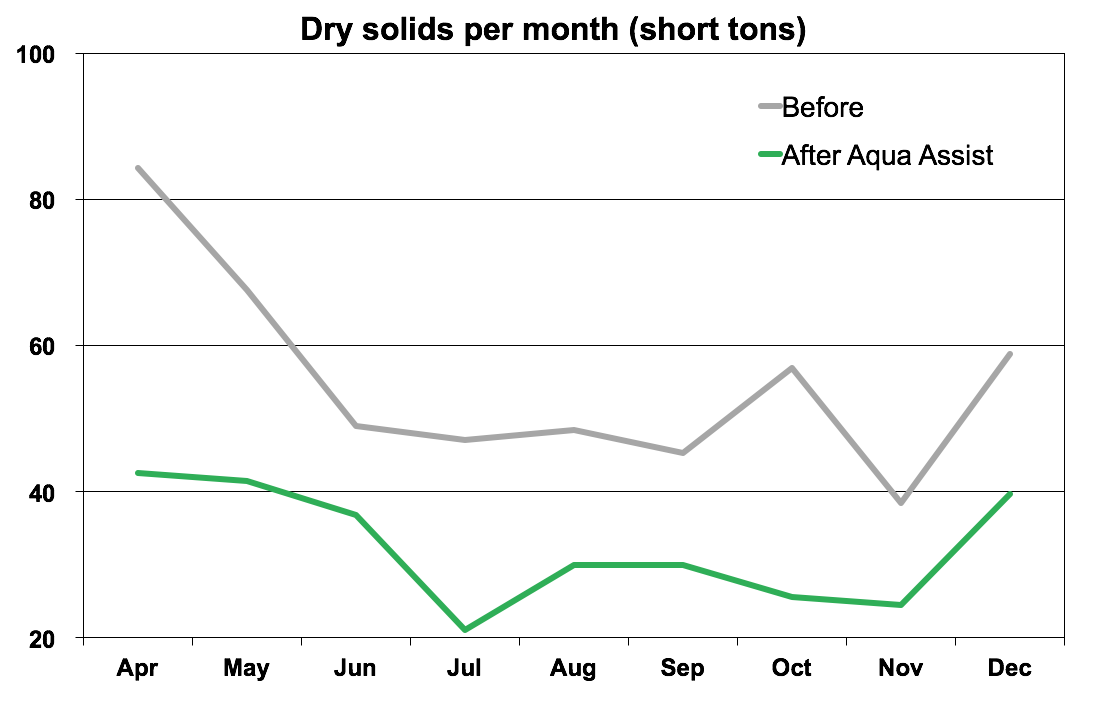Aqua Assist Reduces Solids at 5 MGD Treatment Plant

Overview
- 41% reduction in dry solids
- 43% reduction in WAS
- Additional polymer savings
A medium-size urban community in Texas had a big problem. Its 5 MGD wastewater treatment plant (WWTP) was producing too many dry solids.
The Drylet engineering team carefully examined the plant and determined the best place to apply our product. Unlike our competition, Aqua Assist requires no commitment to new or expensive equipment, and product application is easily added at any facility into the aeration basin or digester.
After selecting a place to add Aqua Assist, the plant began adding it to their aeration basin. After a year of use, Aqua Assist reduced the plant’s dry solids disposal by a monthly average of 41%. This resulted in direct savings in solids hauling costs as well as polymer usage.
Aqua Assist also improved the plant’s waste activated sludge (WAS) rate. Historically, the plant had an average WAS rate of 114,245 gallons per day. After adding Aqua Assist, the average WAS rate improved by 43% to a daily average of 64,742 gallons per day.
In wastewater treatment plants, we focus on improving operations, compliance, and reducing biosolids before they go to the landfill. In addition to reducing direct costs associated with biosolids handling, our product reduces the formation of methane at the landfill where biosolids decompose and contribute to greenhouse gas (GHG) emissions. Saving money for our customers and improving the environment is what separates Drylet from the competition.



.png)
